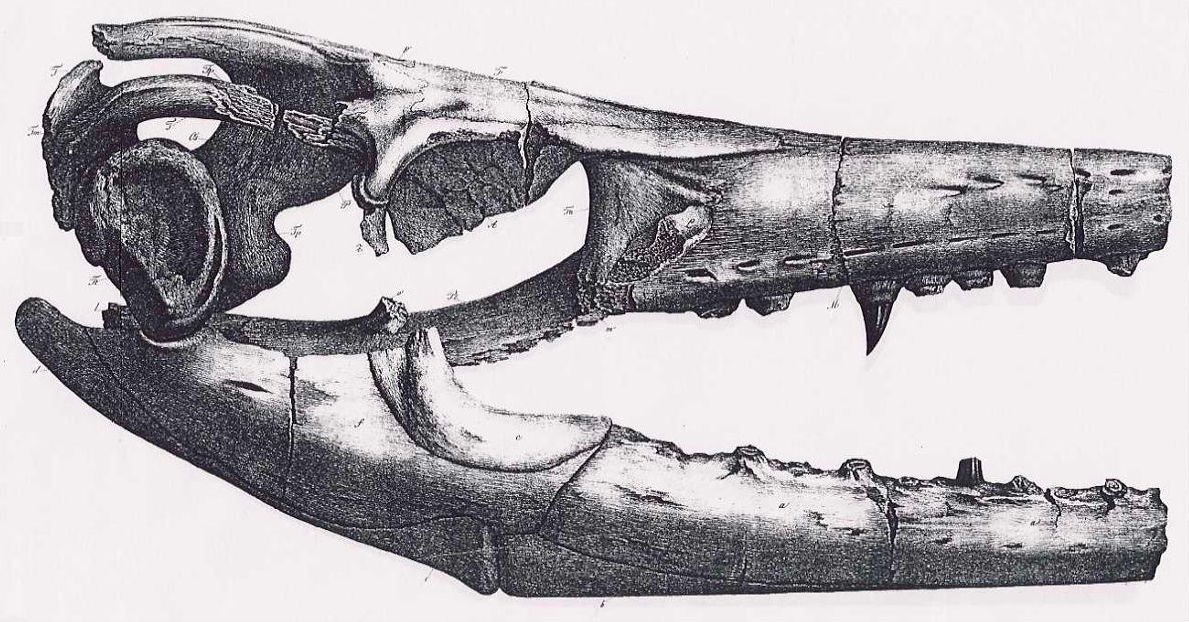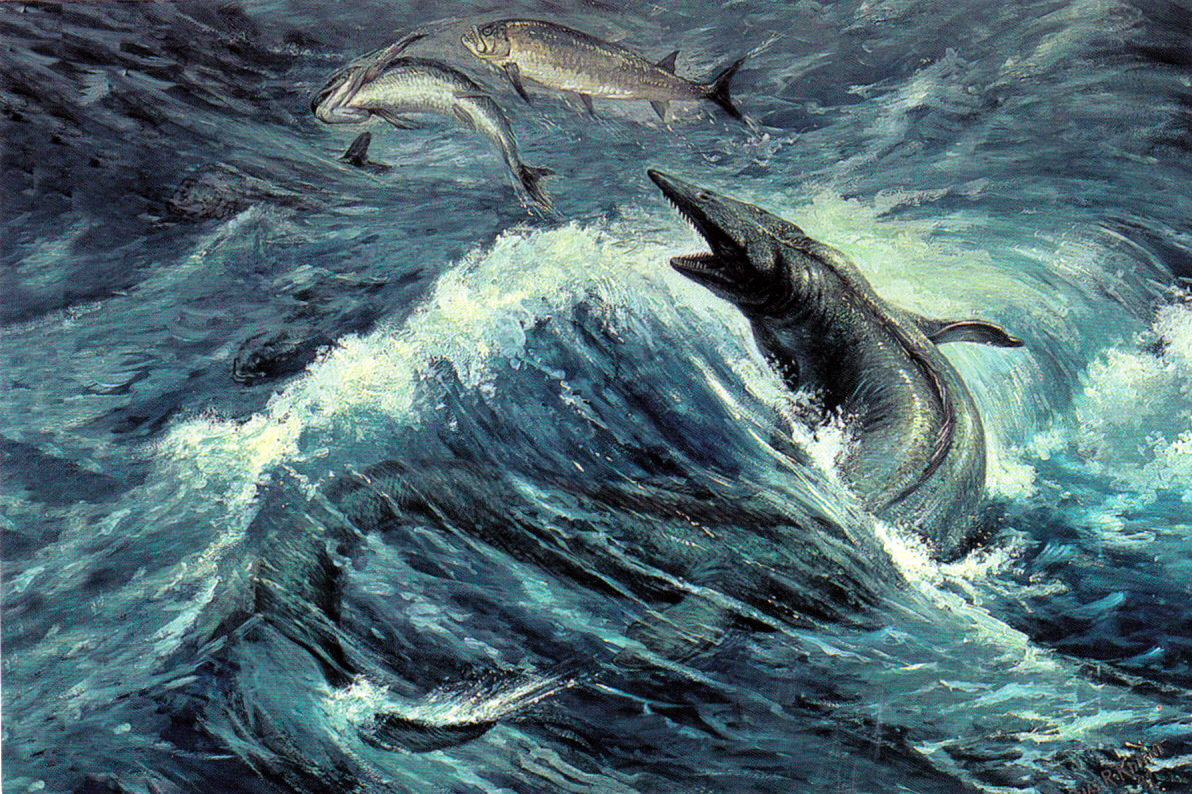Imagine the Anthropocene with a Little Help from the Monster in You…
Monsters are necessary, and helpful, to help us reveal and imagine the strangeness of the present. Monstrous occurrences rely on a visual translation to make the sublime tangible. In the effects of the shudder and the awe, we begin to feel and sense something that otherwise might remain abstract and distant to us. One can begin to trace a tradition of projecting these abstract conditions and circumstances with the help of monsters. The creation of monsters can be understood as an established and successful cultural technique—below are two quite different examples.
A) Maas Monster > Maastrichtian
In 1770, in the limestone quarries along the Maas River Valley, a skull-head with sharp teeth, measuring three meters, was uncovered. No one had seen anything close to this before and it was soon named the Maas Monster. Over a scientific learning curve of decades, the archaeological artifacts of the giant predator were identified: the sea-reptile turned out to be a critical indicator for a geological period later named Maastrichtian, dating the limestone strata around the region of today’s Maastricht as 66 million-year-old seafloor.
B) Frankenstein’s Monster
Frankenstein’s monster first appeared in Mary Shelley’s novel Frankenstein in 1823—it was not very popular then. Only later, when people felt the repercussions of modernization, did they begin to reflect on their own existence as the subject of the larger lab experiment of modernity. Critical to understanding the drama is that what Frankenstein’s monster suffered from most was a lack of empathy from his creator—if only the Doctor had cared more . . .
Monsters are not an end in themselves but a means to begin an approximation to the otherwise incomprehensible present. This development can be understood as domestication of the monstrous. While in the Maastrichtian the monster remains an unseen exotic alien sea-predator, Frankenstein’s monster is already living with us as our own artifact of cohabitation.
The next step for us to imagine the Anthropocene will involve reflecting on our own nature, and consequently on ourselves as monstrous at first: a necessary step in overcoming and cultivating the monster in us and developing a sense of empathy to our creation as well as to our co-creatures.


